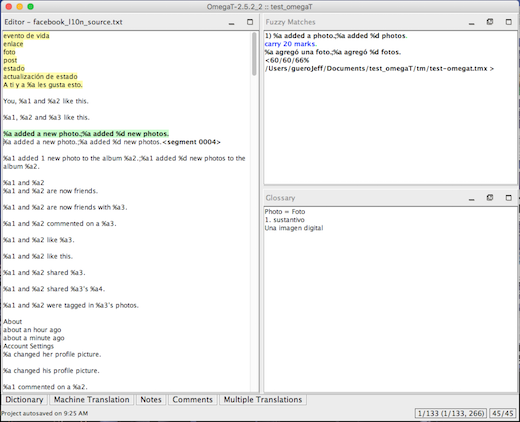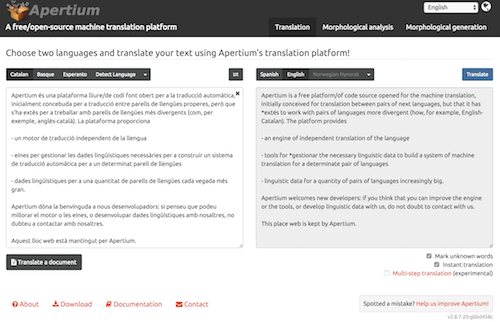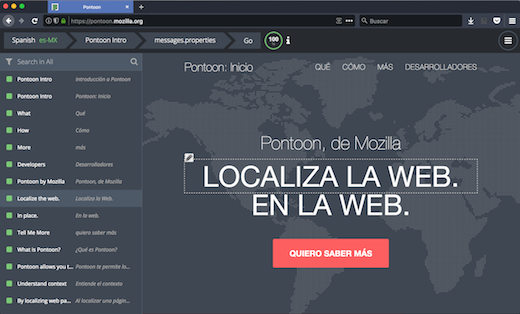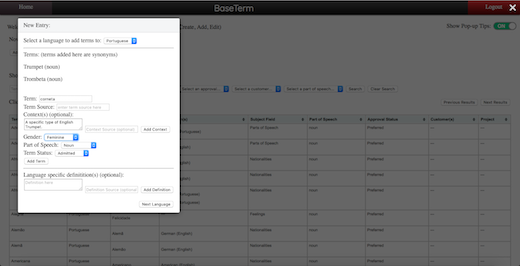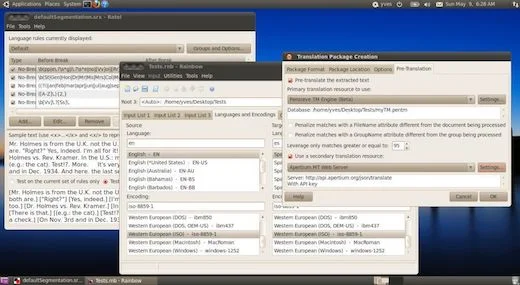Localization plays a central role in the ability to customize an open
source project to suit the needs of users around the world. Besides
coding, language translation is one of the main ways people around the
world contribute to and engage with open source projects.
There are tools specific to the language services industry (surprised
to hear that's a thing?) that enable a smooth localization process with
a high level of quality. Categories that localization tools fall into
include:
- Computer-assisted translation (CAT) tools
- Machine translation (MT) engines
- Translation management systems (TMS)
- Terminology management tools
- Localization automation tools
The proprietary versions of these tools can be quite expensive. A
single license for SDL Trados Studio (the leading CAT tool) can cost
thousands of euros, and even then it is only useful for one individual
and the customizations are limited (and psst, they cost more, too). Open
source projects looking to localize into many languages and streamline
their localization processes will want to look at open source tools to
save money and get the flexibility they need with customization. I've
compiled this high-level survey of many of the open source localization
tool projects out there to help you decide what to use.
Computer-assisted translation (CAT) tools
CAT tools are a staple of the language services industry. As the name
implies, CAT tools help translators perform the tasks of translation,
bilingual review, and monolingual review as quickly as possible and with
the highest possible consistency through reuse of translated content
(also known as translation memory). Translation memory and terminology
recall are two central features of CAT tools. They enable a translator
to reuse previously translated content from old projects in new
projects. This allows them to translate a high volume of words in a
shorter amount of time while maintaining a high level of quality through
terminology and style consistency. This is especially handy for
localization, as text in a lot of software and web UIs is often the same
across platforms and applications. CAT tools are standalone pieces of
software though, requiring translators that use them to work locally and
merge to a central repository.
Tools to check out:
Machine translation (MT) engines
MT engines automate the transfer of text from one language to
another. MT is broken up into three primary methodologies: rules-based,
statistical, and neural (which is the new player). The most widespread
MT methodology is statistical, which (in very brief terms) draws
conclusions about the interconnectedness of a pair of languages by
running statistical analyses over annotated bilingual corpus data using
n-gram models.
When a new source language phrase is introduced to the engine for
translation, it looks within its analyzed corpus data to find
statistically relevant equivalents, which it produces in the target
language. MT can be useful as a productivity aid to translators,
changing their primary task from translating a source text to a target
text to post-editing the MT engine's target language output. I don't
recommend using raw MT output in localizations, but if your community is
trained in the art of post-editing, MT can be a useful tool to help
them make large volumes of contributions.
Tools to check out:
Translation management systems (TMS)
TMS tools are web-based platforms that allow you to manage a
localization project and enable translators and reviewers to do what
they do best. Most TMS tools aim to automate many manual parts of the
localization process by including version control system (VCS)
integrations, cloud services integrations, project reporting, as well as
the standard translation memory and terminology recall features. These
tools are most amenable to community localization or translation
projects, as they allow large groups of translators and reviewers to
contribute to a project. Some also use a WYSIWYG editor to give
translators context for their translations. This added context improves
translation accuracy and cuts down on the amount of time a translator
has to wait between doing the translation and reviewing the translation
within the user interface.
Tools to check out
Terminology management tools
Terminology management tools give you a GUI to create terminology
resources (known as termbases) to add context and ensure translation
consistency. These resources are consumed by CAT tools and TMS platforms
to aid translators in the process of translation. For languages in
which a term could be either a noun or a verb based on the context,
terminology management tools allows you to add metadata for a term that
labels its gender, part of speech, monolingual definition, as well as
context clues. Terminology management is often an underserved, but no
less important, part of the localization process. In both the open
source and proprietary ecosystems, there are only a small handful of
options available.
Tools to check out
Localization automation tools
Localization automation tools facilitate the way you process
localization data. This can include text extraction, file format
conversion, tokenization, VCS synchronization, term extraction,
pre-translation, and various quality checks over common localization
standard file formats. In some tool suites, like the Okapi Framework,
you can create automation pipelines for performing various localization
tasks. This can be very useful for a variety of situations, but their
main utility is in the time they save by automating many tasks. They can
also move you closer to a more continuous localization process.
Tools to check out
Source: https://opensource.com
